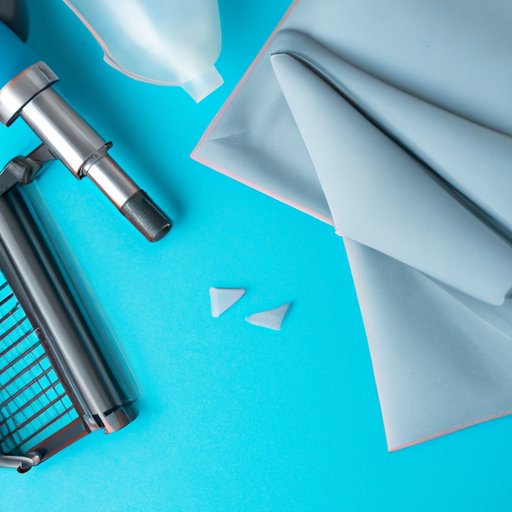
I. Introduction
Dust buildup in homes can be frustrating, especially for those who suffer from allergies or respiratory problems. While it seems like a never-ending battle, there are numerous ways to reduce and eliminate dust in your home. This guide will provide comprehensive tips and strategies for keeping your home clean and dust-free.
II. Cleaning your air filters
Air filters are essential in trapping dust and other impurities in the air. It is critical to change or wash them regularly to ensure they are not releasing the dust back into your home. Check the manufacturer’s instructions to determine how frequently they need to be changed or cleaned. Consider vacuuming your air vents regularly to prevent further buildup. If you have pets, it is essential to clean your filters more often. To maintain air filter cleanliness, consider buying high-quality filters or upgrading your HVAC system.
III. Vacuum often
Investing in a high-quality vacuum cleaner is crucial in eliminating dust from your home. Vacuuming at least once a week is recommended, but certain areas may require more frequent cleaning depending on foot traffic. To prevent dust buildup on furniture and curtains, consider using vacuum attachments designed for upholstery and curtains. It is also a good idea to dust surfaces before vacuuming to ensure any loose debris is picked up effectively.
IV. Control humidity levels
High humidity levels can attract dust mites, worsening allergies or respiratory problems. Using a dehumidifier can help maintain humidity levels and prevent further buildup. It is recommended to keep humidity levels between 30% and 50%. Consider purchasing humidity sensors for different areas of your home, such as basements or bathrooms, to keep track of levels. Additional tips for reducing humidity include using exhaust fans in bathrooms and kitchens and fixing any leaks or water damage in your home.
V. Dusting regularly
Dusting is essential for eliminating dust buildup in your home, but it can be time-consuming. Use a microfiber cloth to trap dust particles and prevent them from spreading. Dust from the top down, starting with ceiling fixtures and fixtures on walls and ending with floors and baseboards. Make sure to dust behind and underneath furniture and electronics where dust tends to collect. Consider waxing or polishing furniture after dusting to prevent further buildup.
VI. Change bed sheets regularly
Dead skin cells and dust mites can accumulate in bedding and worsen allergies or respiratory problems. It is recommended to change your bedding at least once a week. Wash bedding in hot water to kill dust mites and use hypoallergenic pillowcases and mattress covers. Consider dusting your mattress and vacuuming your bed frame regularly to prevent further buildup.
VII. Keep windows closed
Dust can easily enter through windows and doors, so it is essential to keep them closed. Consider using an air purifier, which can trap dust particles and other impurities in the air, as an alternative to opening windows for ventilation. Regularly clean your window sills and frames to prevent further buildup. Additionally, maintain a comfortable temperature in your home with an HVAC system or fans to reduce the likelihood of dust and other particles moving through the air.
VIII. Declutter your home
Clutter can harbor dust and impurities, so it is crucial to declutter your home regularly. Start with your primary living spaces, such as the living room, bedrooms, and kitchen. Donate or sell any items you no longer need and store items in labeled bins or containers. Clean and dust surfaces before putting things away. Make decluttering a routine habit by dedicating time each week to maintain your home’s cleanliness.
IX. Conclusion
Eliminating dust buildup in your home is a challenging but necessary task for those struggling with allergies or respiratory problems. Implementing the strategies outlined in this guide, such as cleaning air filters, vacuuming, controlling humidity levels, dusting regularly, changing bed sheets, keeping windows closed, and decluttering your home, can help reduce dust buildup. By incorporating these tips into your cleaning routine, you can breathe easier and enjoy a cleaner, healthier home.




